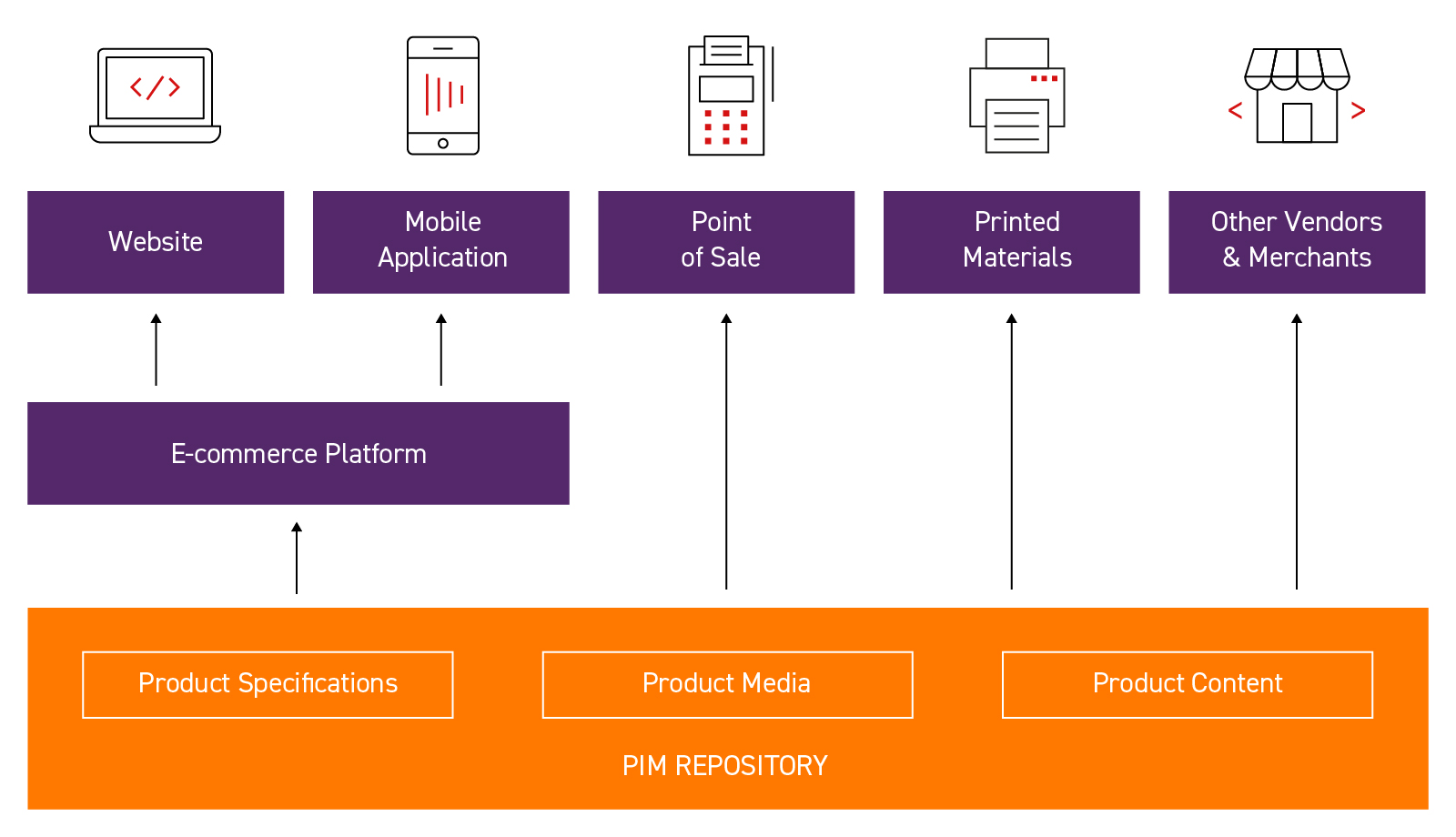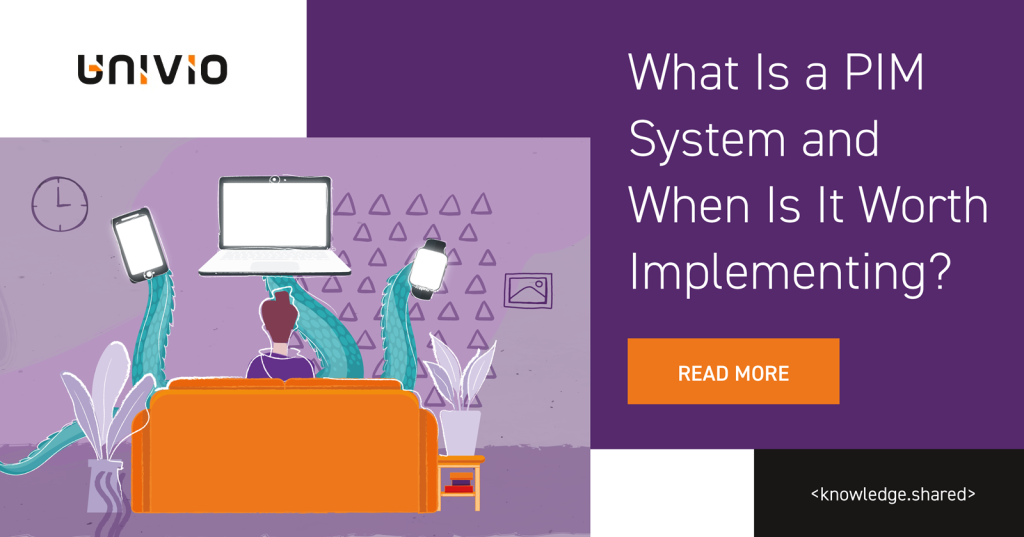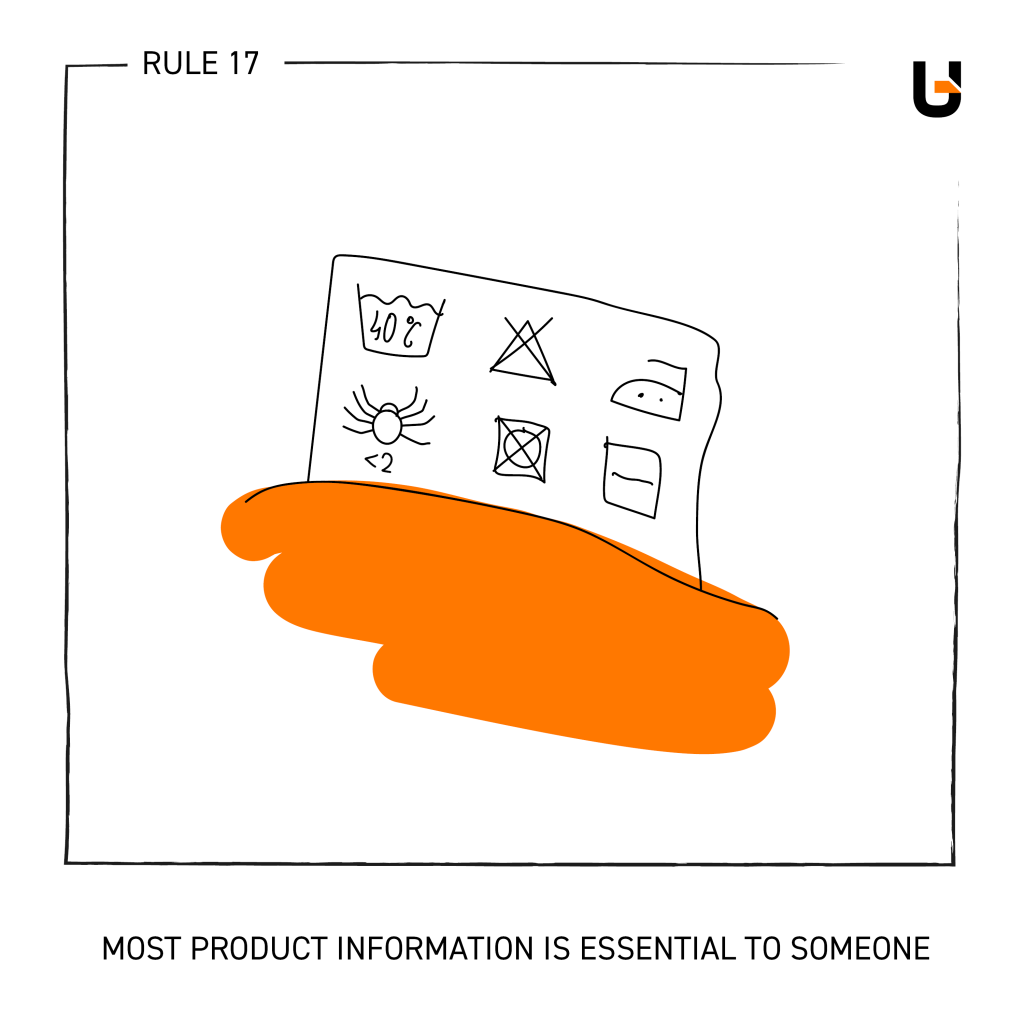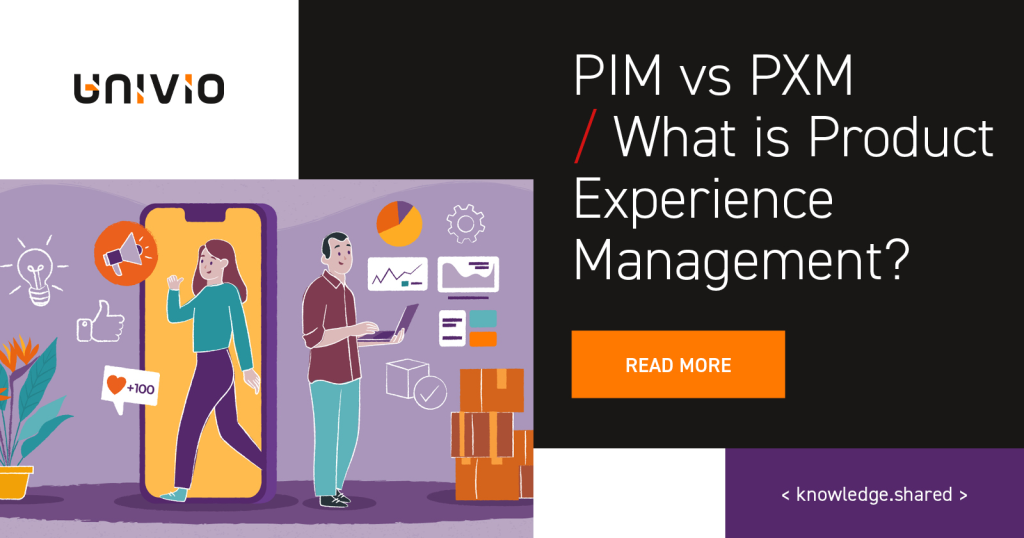Product Information Management Best Practices
Lots of products to manage and too many tools in the process? Or perhaps digital assets are scattered across the organization? Whether you’re a product manager looking to save time, or a business leader looking to improve operational efficiency, it’s never a bad time to make a positive change.
Here, we want to share the best practices for successful product information management, covering not only the technical aspects related to PIM implementation, but also the various business and organizational challenges necessary to get everything – and everyone – on the same page.
A Centralized Source of Truth
By far the biggest improvement any organization can make, moving data from different systems to a single source of truth will go a great way to improving data quality and associated processes. By far the best option for this, when it comes to product data, is a Product Information Management (PIM) tool.

What is PIM Software?
When it comes to data governance, you need the right tools for the job. For consistent product descriptions, photographs and other media, PIM solutions are the ideal product management tool. Various solutions, such as Akeneo, Pimcore and Ergonode, are available.
Although they differ in some functionalities, they all enable the delivery of consistent product data to all sales channels, including online stores, e-commerce platforms, desktop stores, mobile apps, etc. This allows organizations to effectively handle omnichannel sales and reach a wider range of customers.

It’s important to note, however, that we do not recommend storing all types of data in the PIM system. PIM systems are primarily designed for storing and managing product information such as descriptions, features, images, or other multimedia. Sales data, such as prices and inventory levels, should be stored and managed by dedicated systems such as ERP, WMS, or CRM. Storing non-product-related data in the PIM system can lead to information disorganization and hinder effective management.
Standardized Product Data
To ensure data consistency, it’s also important to standardize formats and structures. This includes uniform formatting of product names, categories, attributes and units of measurement. Standardization facilitates later data management and improves the clarity and comprehensibility of information. It’s vital that the whole organization is aware of these standards, so that differnet business processes can remain compatiable – rather than finding out right at the end when product descriptions don’t match up.
A Customer Centric Data Model
The best way to achieve this is to implement a single location for PIM data and related media. Naturally, a PIM solution will best achieve this, but this also means that all relevant teams need to be using the chosen system.

However, it’s also important to adopt a customer centric data model. In other words, structure your data around the end user. What measurements do they need? It would be unrealistic to describe furniture to the nearest metre, or to measure clothing by weight.
Clean Your Data!
It’s crucial to thoroughly clean data of any errors and inconsistencies before migrating it to the PIM system. Otherwise, erroneous or incomplete information may be transferred to the system, leading to issues with its subsequent use.
In our experience, it is much more time-consuming and complicated to improve the data already after migration, so it is better to invest time and effort in cleaning the data before this process.
Define Roles & Responsibilities for Product Data
In any process, everyone needs to know their responsibilities, and then permissions need to be granted for thsoe roles. It’s data operations 101.
Restricting PIM system administrator access to no more than two individuals reduces the likelihood of unauthorized access and unintended data alterations. Others should be granted specific permissions aligned with their organizational roles. By assigning permissions according to roles, each employee accesses only the necessary functions and data for their tasks. Limiting full access to the system enhances data security and streamlines product information management.
Have Defined Brand Rules & Guidelines
One of the key reasons to define roles, and enable permissions accordingly, is to protect the brand and customer experience. Only teams that understand the importance of branding, what the customer expects and how to safely deliver it, should be able to edit such product data.

If there are multiple teams, it’s also important to ensure everyone is on the same page and there are no strange overlaps. For example, if different teams are responsible for different products, does each respective product manager use shared guidelines?
Monitor Data Quality
Maintaining high data quality in a PIM system requires regular review and updates. It’s worth taking advantage of the ability to generate reports and saved views that allow you to quickly identify potential problems or errors in the data. Specifying a set of data for verification on a cyclical basis allows you to systematically check the accuracy of the information and quickly intervene if anomalies occur. Validating data on an ongoing basis contributes to maintaining data consistency and accuracy in the PIM system, which in turn has a positive impact on the efficiency of business operations.
Look to Enrich Product Data Where Possible
Nowadays, a product description alone isn’t enough. Customers expect photographs and videos. They want to see products in isolation, but also in situ – be that furniture in a living room, or clothing on a model. In the most advanced cases, you can even consider AR and VR integrations.
You can also consider the navigation, especially when content is displayed in your own channels. This can also include full transparency about the likes of pricing, availability, shipping costs and more. Don’t leave such important needs to the customers imagination.
Don’t Forget about Data & System Integration
Ultimately, a PIM system is just a digital asset management tool. If it’s not properly connected into the wider IT ecosystem, it isn’t reaching vital sales channels, or even backend operations. Most companies use a number of business solutions, such as ERP, CRM, sales systems and more.
As such, product data needs come in – and get sent out – from a variety of locations. Therefore, it is crucial to conduct a detailed analysis of the entire IT ecosystem of the organization at an early stage of the project. Businesses need to consider the types of product information, relationships between them, and hierarchy of product categories and attributes.

Task Automation
Even a simple task, if done often enough, takes up a lot of time. And yet there are always more business needs, so automating tedious work can greatly improve the whole organization. When it comes to product information management, the right system or tools can take care of this, but you still need to identify the processes in question.
So what kind of tasks are we talking about? To give but a few examples:
- Product Updates: Don’t manually update product data in every sales channel – use automated PIM software to greatly speed up the process.
- Streamline Data Collection: Automating the gathering of data from ERP systems, suppliers and other data sources both saves time and eliminates potential human errors.
- Normalize Data Formats: Similarly, once data has been standardized, many processes regarding data formats, such as units of measurement and other attributes, can be automated.
- Product Categorization: The larger your assortment, the more likely goods will belong to one or more products. With similar products, this can easily be done automatically.
- Search Engine Optimization: Enhance product titles, descriptions, and metadata to improve visibility in search engine results, making it easier for customers to find your products. With today’s generative AI capabilities, this is getting easier and easier to automate.
- Integrate Supplier and Vendor Data: Automatically incorporate and synchronize data from suppliers and vendors to enrich product listings and ensure accuracy.
- Incorporate Customer Feedback: Collect and integrate customer reviews and feedback into your product information strategy to enhance relevance and trustworthiness.
Whether its global updates or adapting for specific channels, there are many ways to automate processes and save time.
Utilizing Bulk Actions
For companies with a larger assortment of products, it’s vital to abandon excel spreadsheets and leverage bulk actions. Found in your PIM system and other tools, these greatly speed of the business process of updating, removing or even adding multiple items simultaenously.
Furthermore, bulk actions not only streamline data management processes but also eliminate the risk of human errors and ensure data consistency throughout the system. It’s an efficient way to increase productivity and save time.
Shorten Workflows
Developing clear working rules in the PIM system will enable effective and efficient cooperation. With defined statuses, it is easy to assess at what stage a product is in the information management process. This makes it easy for employees from different departments to monitor the progress of work, identify any delays and ensure that everyone has access to the most up-to-date data.
Take Care of Product Data Sources
All data comes from somewhere, right? Product content is no different here. It’s important to use reliable and verified data sources to avoid the spread of errors and incorrect information. Not all data sources will contain a complete set of information, so you need to find the ones that are most appropriate to the needs of your organization and the products it trades.
Identify all Sales Channels
This might sound simplistic, but knowing where your product descriptions end up is just as essential as knowing where the data comes from. Knowing every sales channel in the business, be it self-run apps and e-commerce stores to external, third-party marketplaces, can ensure that they are properly catered to.
For example, if your product teams are unaware of a given channel, is it being properly integrated? If not, it might be running outdated descriptions. Likewise, if you’re unaware of the channels specific needs, you might not be providing th best, tailored customer experience.

Product Information Management vs Product Data Management Best Practices
Before we wrap things up, a quick aside: in addition to ensuring product content quality, you’ve likely noticed that many of these best practice tips focus on on data management, integration and quality. Don’t be fooled, product information is a subset of wider data management practices. Many of the tips mentioned here, designed to help you manage your products, are drawn from data governance methodologies.
As your business grows, understanding that product information management is part of a wider ecosystem, next to logistics, distribution, warehousing, sales, marketing and more, will help you ensure its smooth cooperation with all of these other departments.
How to Implement These PIM Best Practices
Now let’s turn the theoretical into the practical. We’ve already hinted at the vital importance of PIM software when it comes to PIM best practices – the clue is in the name! While you can arguably get by with master data management, in our experience, the need for software tailored to specific product and business needs is worth the investment.
Start with a PIM System
As you might have guessed from our constant references… PIM systems are essential for successful product information management.
- If you already have a PIM: Well, that’s great! Look for opportunties to improve the surrounding processes, integrations and additional time consuming tasks. A successful PIM implementation is an ongoing process, however, so we’re sure there is something that can still be improved 😉
- If you don’t currently have a PIM: We highly consider investing in one. The more goods you sell, the more product management will matter. What’s more, it will help you rapidly scale to additional sales channels, as well as enable many of the best practices mentioned here.

Define Roles
Roles matter. We mentioned it earlier, but we’ll mention it again. From data validation to ensuring data quality, you need to enable the right people at the right moment.
Understanding the difference between product managers and content managers will help ensure both have their influence on product information and, thus, the customer journey. Don’t just simply whitelist the entire marketing team, as this can cause a lot more problems down the line.
…and Go!
Incorporating our best practices will help you optimize your data management processes, improve data quality, and maximize the benefits of your PIM system. By prioritizing data quality monitoring, implementing the right workflows, assigning the right permissions, and automating tasks, you can ensure a successful PIM implementation that aligns with your organization’s goals and objectives.
In other words, PIM platforms and streamlined processes can help you build a distinct, competitive edge in your market.







